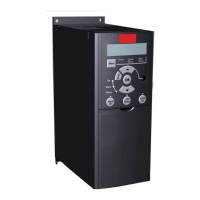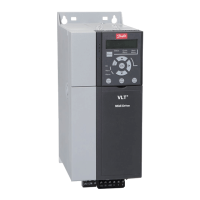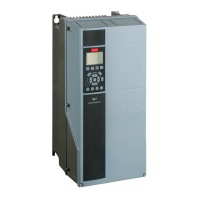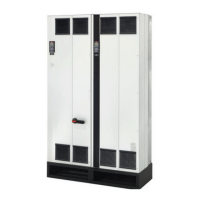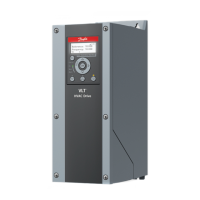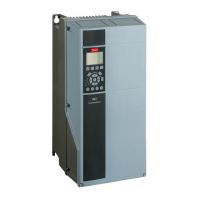2.5.3 Example of Energy Savings
As shown in Illustration
2.3, the flow is controlled by
changing the RPM. By reducing the speed only 20% from
the rated speed, the flow is also reduced by 20%. This is
because the flow is directly proportional to the RPM. The
consumption of electricity, however, is reduced by 50%.
If the system in question only needs to be able to supply a
flow that corresponds to 100% a few days in a year, while
the average is below 80% of the rated flow for the
remainder of the year, the amount of energy saved is even
more than 50%.
Illustration 2.3 describes the dependence of flow, pressure and
power consumption on RPM.
Q=Flow P=Power
Q
1
=Rated
flow P
1
=Rated power
Q
2
=Reduced flow P
2
=Reduced power
H=Pressure n=Speed regulation
H
1
=Rated pressure n
1
=Rated speed
H
2
=Reduced pressure n
2
=Reduced speed
Table 2.4 The Laws of Proportionality
n
100%
50%
25%
12,5%
50% 100%
80%
80%
175HA208.10
Power ~n
3
Pressure ~n
2
Flow ~n
Illustration 2.3 Laws of Proportionally
Flow
:
Q
1
Q
2
=
n
1
n
2
Pressure
:
H
1
H
2
=
(
n
1
n
2
)
2
Power
:
P
1
P
2
=
(
n
1
n
2
)
3
2.5.4 Comparison of Energy Savings
The Danfoss frequency converter solution offers major
savings compared with traditional energy saving solutions.
This is because the frequency converter is able to control
fan speed according to thermal load on the system and
the fact that the frequency converter has a built-in facility
that enables the frequency converter to function as a
Building Management System, BMS.
Illustration 2.5 shows typical energy savings obtainable
with 3 well-known solutions when fan volume is reduced
to i.e. 60%.
As the graph shows, more than 50% energy savings can be
achieved in typical applications.
130BA782.10
Discharge
damper
Less energy savings
IGV
Costlier installation
Maximum energy savings
Illustration 2.4 The Three Common Energy Saving Systems
130BA779.11
0 60 0 60 0 60
0
20
40
60
80
100
Discharge Damper Solution
IGV Solution
VLT Solution
Energy consumed
Energy consumed
Energy consumed
Input power %
Volume %
Illustration 2.5 Energy Savings
Discharge dampers reduce power consumption somewhat.
Inlet Guide Vans offer a 40% reduction but are expensive
Safety and Conformity
VLT
®
Micro Drive FC 51 Design Guide
14 MG02K202 - VLT
®
is a registered Danfoss trademark
22
Buy: www.ValinOnline.com | Phone 844-385-3099 | Email: CustomerService@valin.com
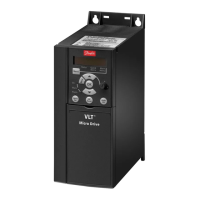
